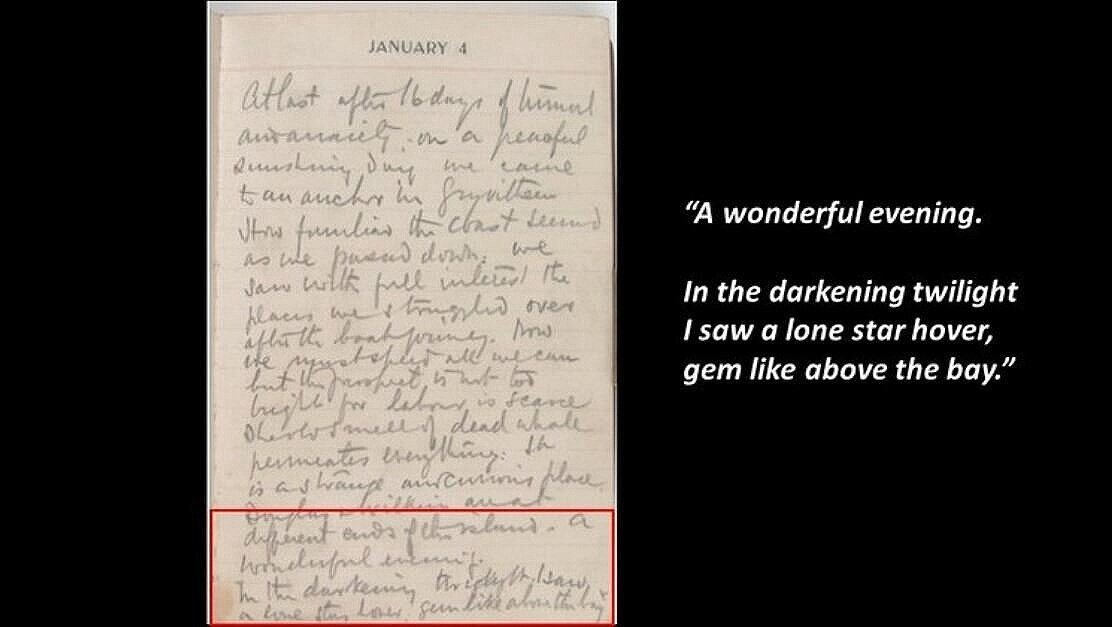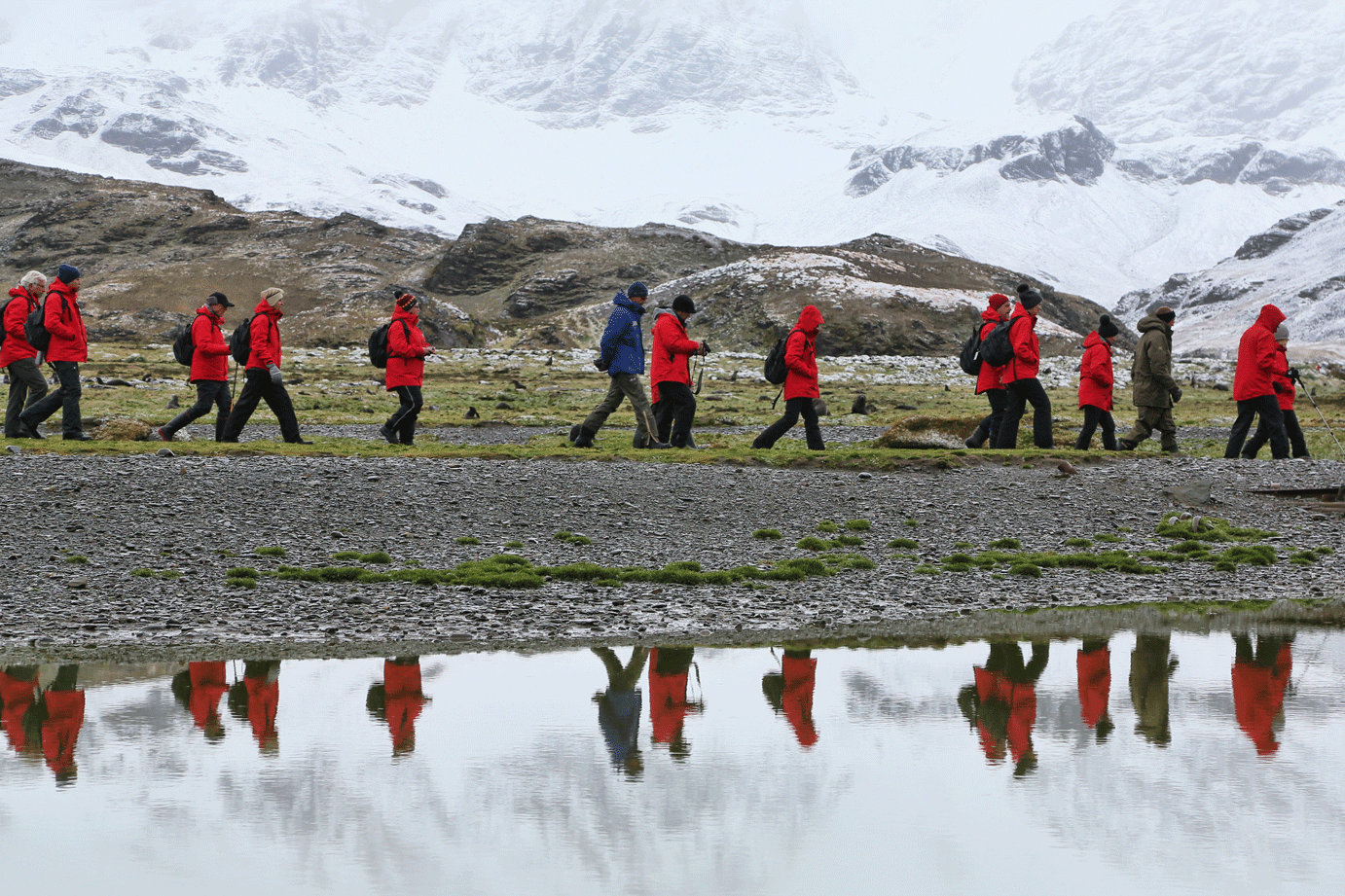died on this day in 1922 in Grytviken, South Georgia, and is buried in the graveyard just outside the historic and remote whaling station. On the evening before he passed away, after returning to his ship in the harbor - the Quest - he wrote what was to be the final entry in his log book:
Final page from Shackleton’s log book, courtesy of the Scott Polar Institute.
Using the SkySafari planetarium program, entering the location, time and date of that fateful night in Grytviken, this is the starry sky that Shackleton would have witnessed. Sirius and Canopus are the two brightest stars in the night sky, and he was almost certainly writing about one of them.
Sir Ernest Shackleton is one of my great heroes, leading the entire crew of the Endurance to an epic rescue in brutal Antarctic conditions on the ill-fated 1914–1917 Imperial Trans-Antarctic Expedition. I will certainly raise a toast to him today, the 99th anniversary of his death. RIP.











































